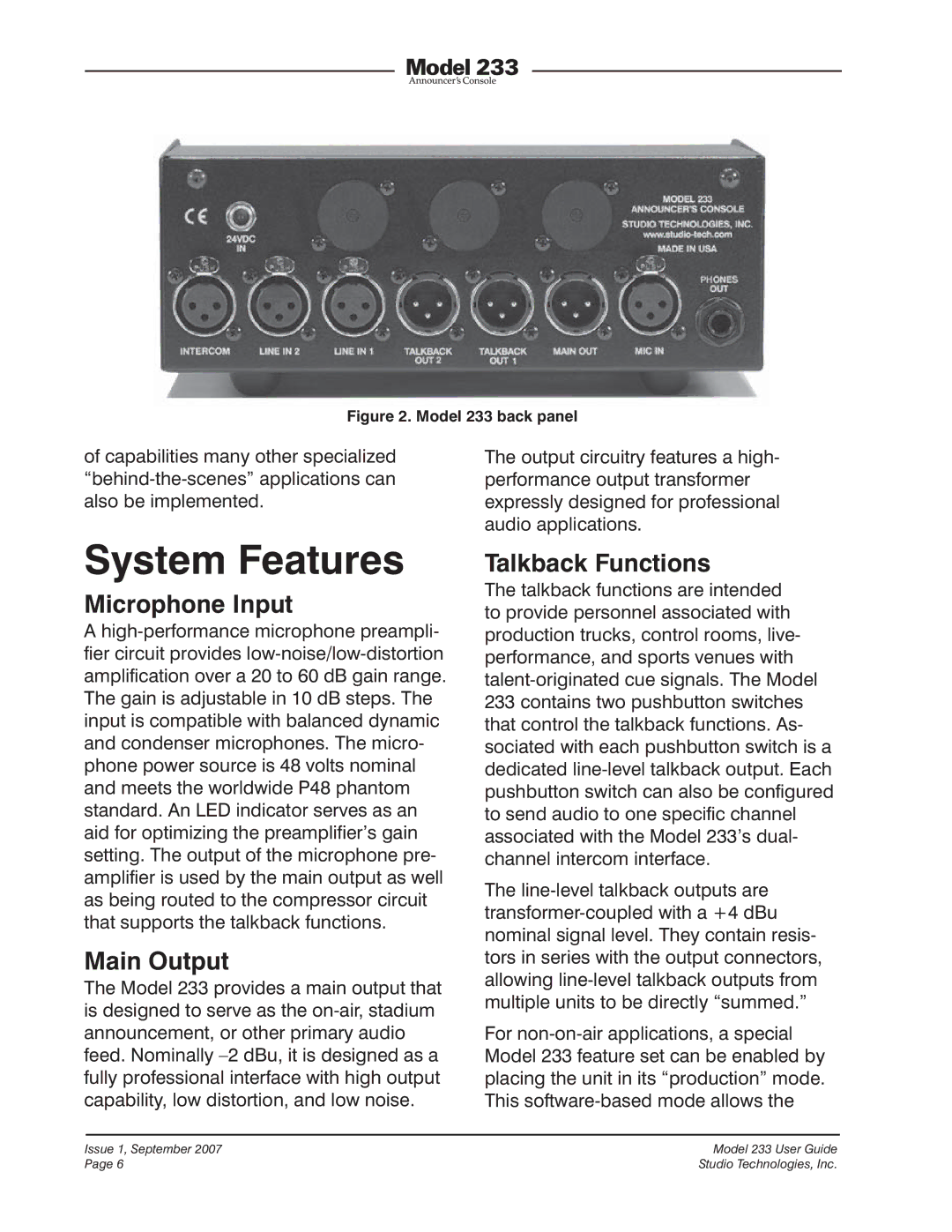Figure 2. Model 233 back panel
of capabilities many other specialized “behind-the-scenes” applications can also be implemented.
The output circuitry features a high- performance output transformer expressly designed for professional audio applications.
System Features
Microphone Input
A high-performance microphone preampli- fier circuit provides low-noise/low-distortion amplification over a 20 to 60 dB gain range. The gain is adjustable in 10 dB steps. The input is compatible with balanced dynamic and condenser microphones. The micro- phone power source is 48 volts nominal and meets the worldwide P48 phantom standard. An LED indicator serves as an aid for optimizing the preamplifier’s gain setting. The output of the microphone pre- amplifier is used by the main output as well as being routed to the compressor circuit that supports the talkback functions.
Main Output
The Model 233 provides a main output that is designed to serve as the on-air, stadium announcement, or other primary audio feed. Nominally –2 dBu, it is designed as a fully professional interface with high output capability, low distortion, and low noise.
Talkback Functions
The talkback functions are intended to provide personnel associated with production trucks, control rooms, live- performance, and sports venues with talent-originated cue signals. The Model 233 contains two pushbutton switches that control the talkback functions. As- sociated with each pushbutton switch is a dedicated line-level talkback output. Each pushbutton switch can also be configured to send audio to one specific channel associated with the Model 233’s dual- channel intercom interface.
The line-level talkback outputs are transformer-coupled with a +4 dBu nominal signal level. They contain resis- tors in series with the output connectors, allowing line-level talkback outputs from multiple units to be directly “summed.”
For non-on-air applications, a special Model 233 feature set can be enabled by placing the unit in its “production” mode. This software-based mode allows the
Issue 1, September 2007 | Model 233 User Guide |
Page 6 | Studio Technologies, Inc. |

